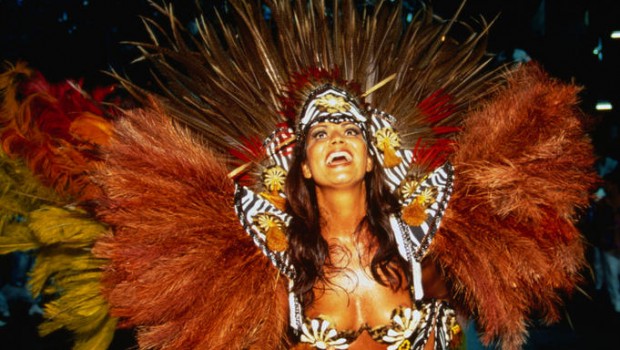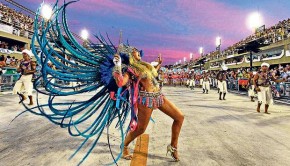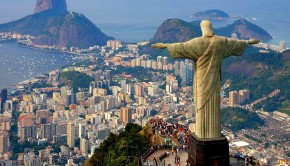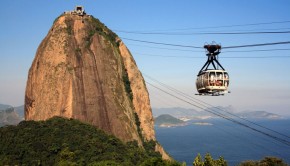Brazil’s Carnaval
Say Carnaval and what images come to mind? Fantastically and scantily garbed dancers, pounding samba rhythms, parades, incessant revelry? Rio de Janeiro?
The four days and nights of carnaval in Rio are the lavish self-indulgent anything-goes exotic exhibitionist spectacle the world sees. They are the result of year-long planning organizing practicing and fantasies – and a lot of hard work!
The dates change from year to year. Check the schedule for Rio de Janeiro’s Carnaval Dates. To get to any of the carnaval locations, you’ll need travel arrangements. Compare and select flights from your area. You can also browse for hotels and car rentals.
Carnaval came to South America from Europe as celebrations before the beginning of the forty day Lenten season of fasting and prayer. The wordcarnival is thought to come from the Italian carne valeor farewell to meat which was not eaten during Lent. These late winter celebrations in Europe gave root to the high-summer frenzy of carnaval in South America.
In Brazil, the Portuguese traditions of entrudothrowing water flour and mud at unsuspecting passers-by evolved into a more lighthearted flour and water or egg tossing spree in Brazil. At the beginning the celebrations were a form of merry-making that the higher classes celebrated privately in their homes while the poorer classes took to the streets in unplanned and unformed revelry. The aristocratic gentry might have looked down on the street frolics but it wasn’t long before the more adventurous among them ventured out heavily masked and disguised to join the fun.

The Samba comes from the West African heritage of Brazil and the infectious rhythms and contagious beat are intrinsically linked with carnaval. The pounding drums get into your bloodstream, your feet start moving and before you know it, you’re dancing! If you’re watching the parades, you can dance and sing along with the escolas as they dance and posture by.
The street parades and neighborhood samba schools or escolas de samba began to compete with each other in the 1930’s. Today that competition is similar to the rivalry between sports teams and as much thought preparation and resources go into the escola’s entry as goes to a top-notch sports team. The money needed to equip the escola’s dancers comes from ticket sales, television rights and the member’s own pockets.
Most of the escolas are from the poorest sections of towns the favelas that cling precariously to Rio’s hillsides. They hold practice sessions for months before carnaval. You can sit in on one of these sessions for a small fee but you probably will not see the spectacular costumes chosen for the year’s theme.
17 Responses to Brazil’s Carnaval
Leave a Reply
You must be logged in to post a comment.
















Pingback: Eduardo
Pingback: Todd
Pingback: pedro
Pingback: michael
Pingback: Ramon
Pingback: Jack
Pingback: michael
Pingback: kenny
Pingback: Kenneth
Pingback: Adrian
Pingback: Alfredo
Pingback: marc
Pingback: Wesley
Pingback: eddie
Pingback: Billy
Pingback: shannon
Pingback: Carlos